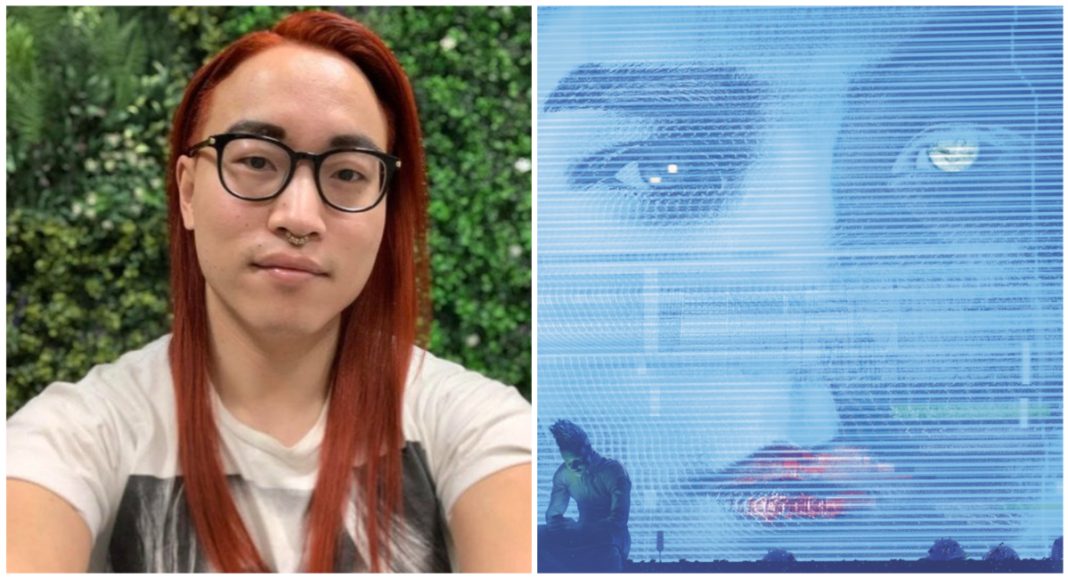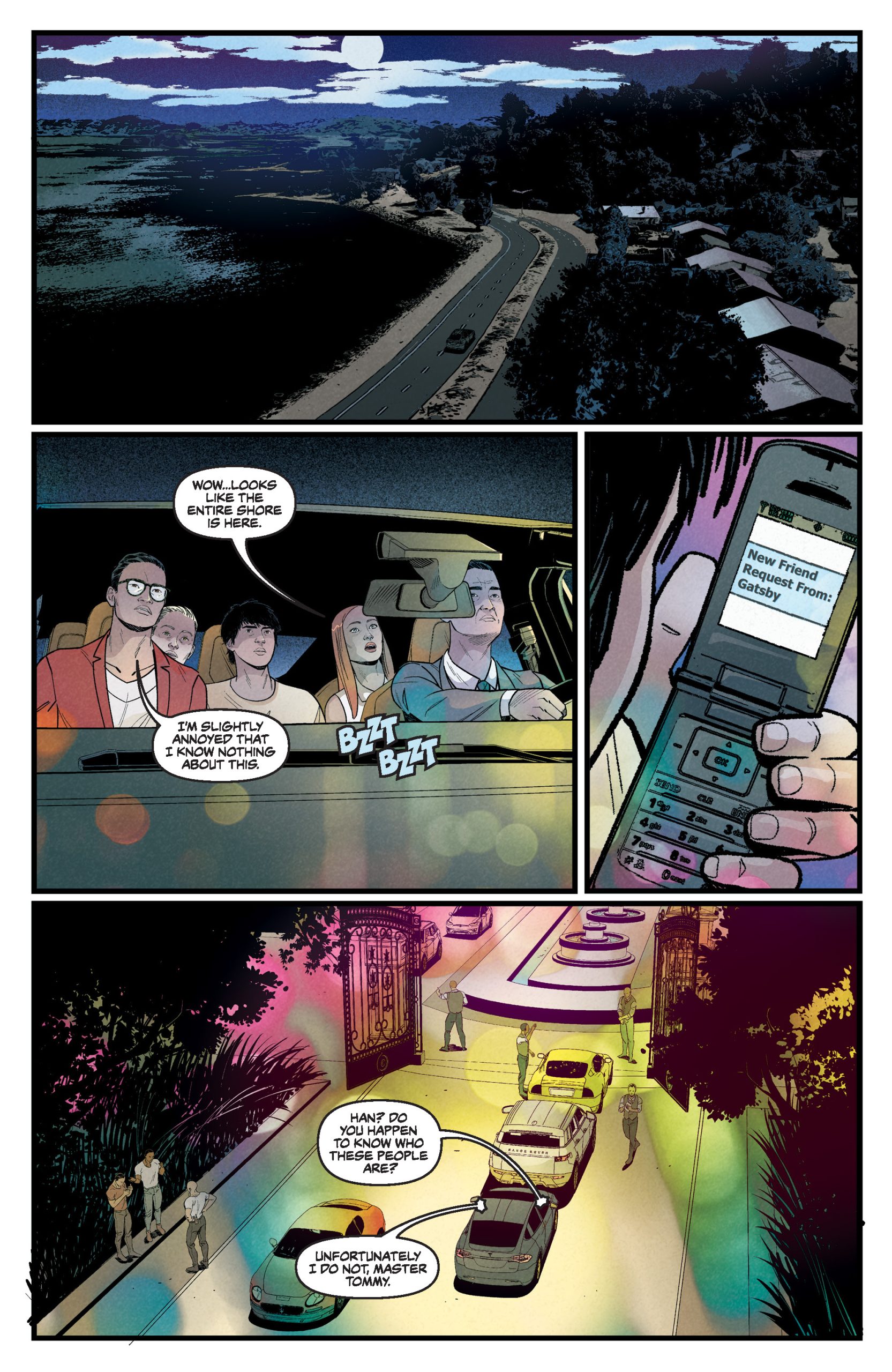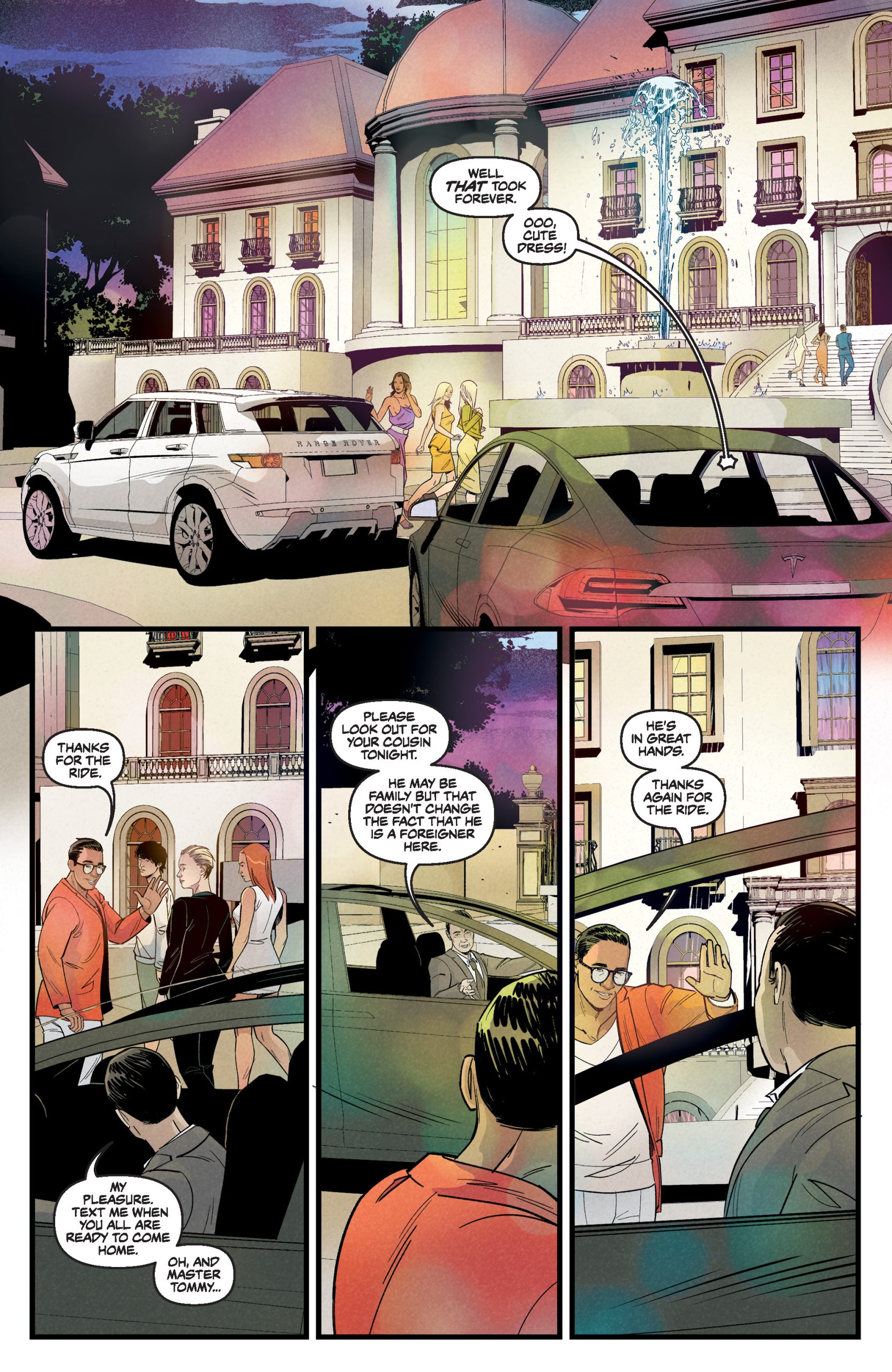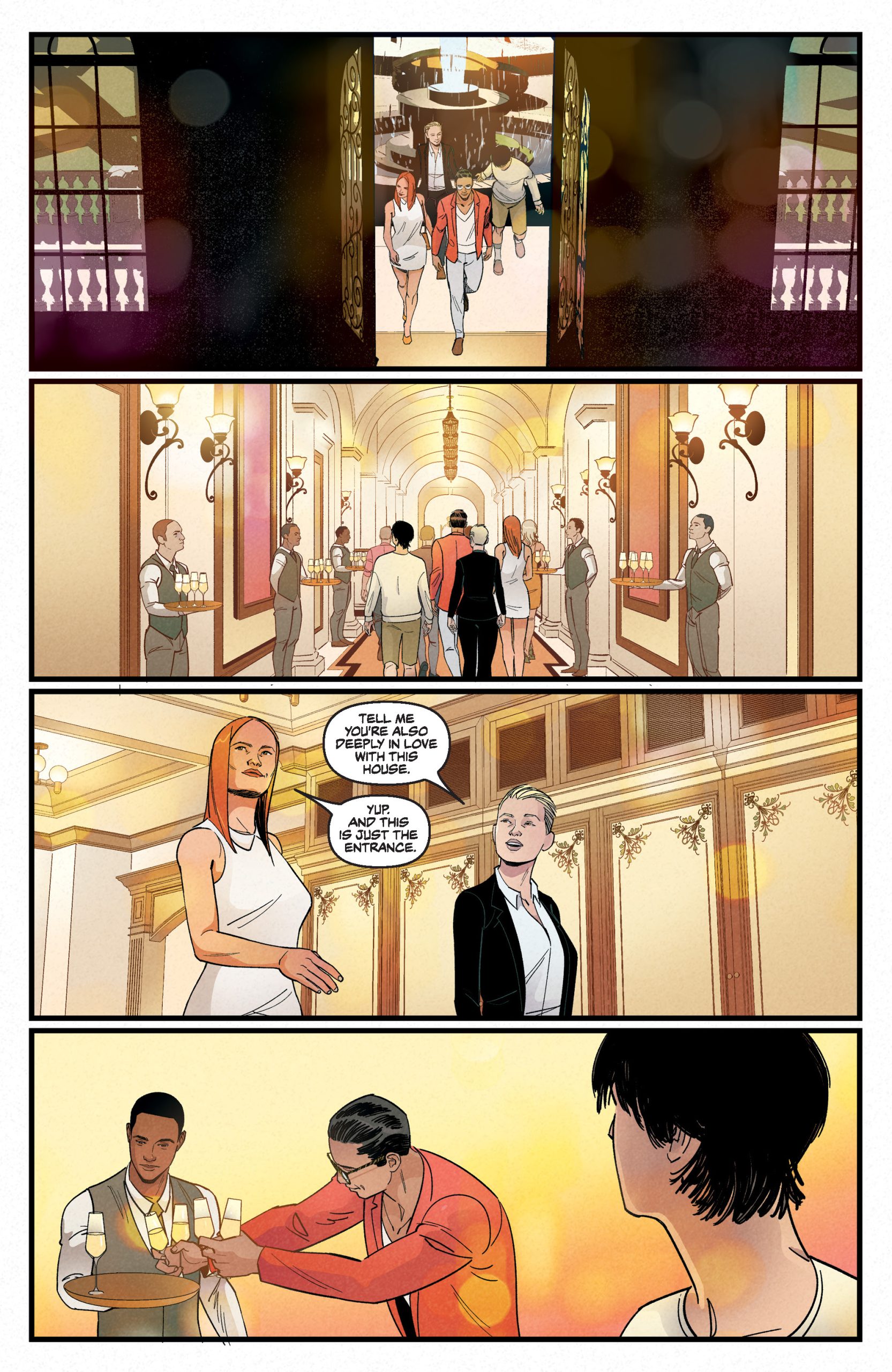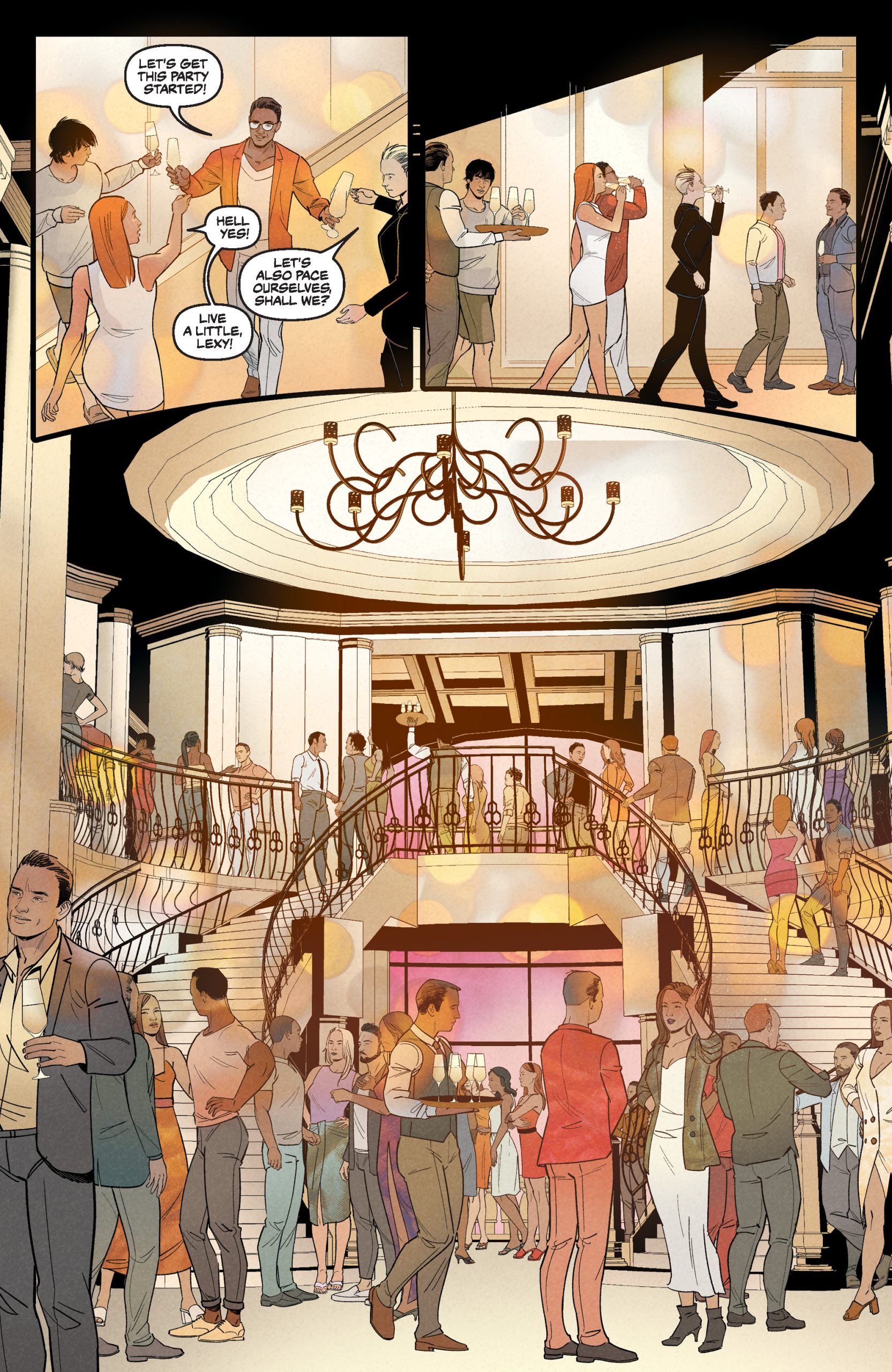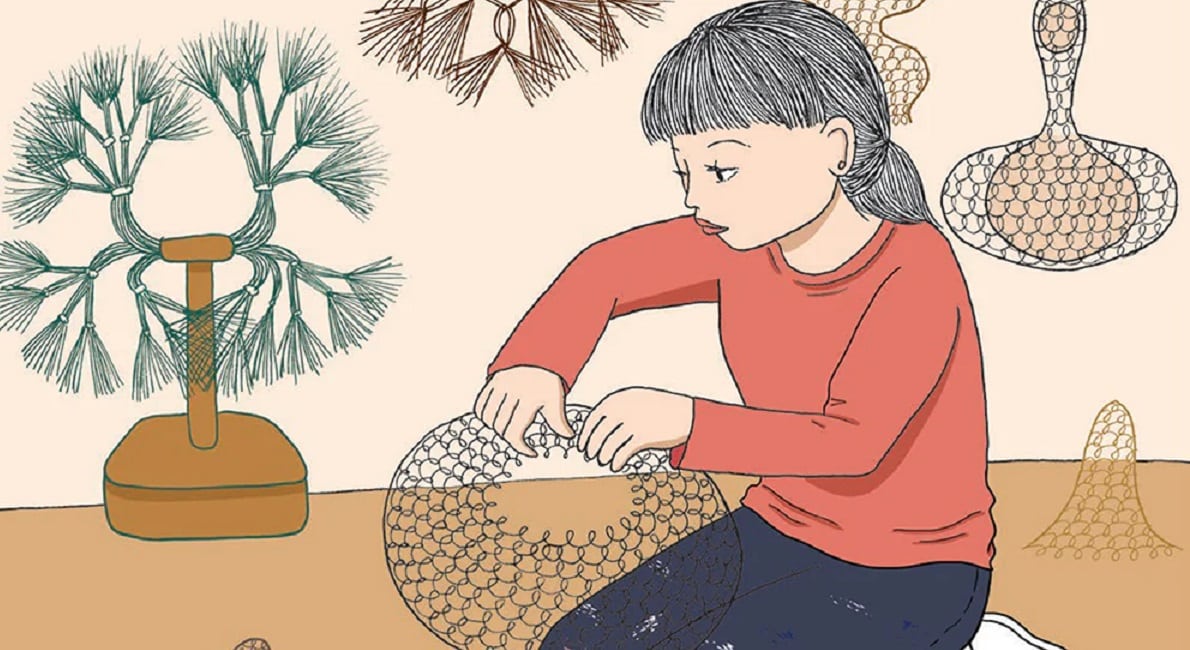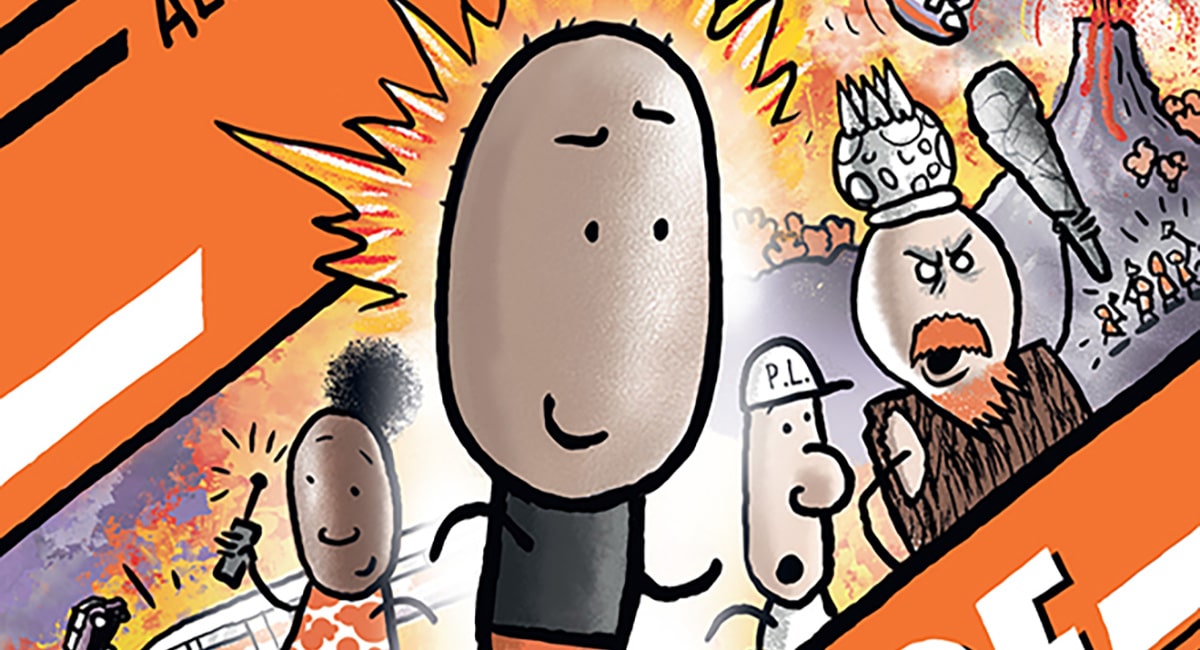Gatsby, Jeremy Holt (Made in Korea, After Houdini)’s newest graphic novel from AWA Studios, debuts this May and reimagines the “Great American Novel,” F. Scott Fitzgerald’s The Great Gatsby. When Holt read The Great Gatsby for the first time during the height of the COVID-19 pandemic, they fell in love with Fitzgerald’s iconic novel and beautifully flawed characters. While the main plot points and themes are familiar to the original novel, unlike other Gatsby comic adaptations Holt’s rendition views the story in a new light, recontextualizing it through teenage character leads for the technology, societal norms, and economic striving of the 2020s as opposed to the 1920s.
Instead of being based on characters from West to East, the reimagining focuses on characters who have moved from East to West. The official synopsis of Gatsby reads:
When middle-class Singaporean student Lu Zhao is invited to spend a summer on Long Island with his rich cousin, Tommy, before attending Columbia University in the fall, his assimilation into the opulent American lifestyle straps him into a collision course fueled by designer drugs, sex, deceit, and murder. Set in present-day Long Island, Gatsby reimagines F. Scott Fitzgerald’s classic novel as an LGBTQ-tinged, multicultural thriller for the Internet age.
The Beat chatted with Holt and with Axel Alonso, Co-Founder and Chief Creative Officer of AWA Studios, about the process of reimagining and modernizing The Great Gatsby in their upcoming graphic novel, why the original novel spoke to them as pandemic literature, and the history of the project.
Rebecca Oliver Kaplan: Jeremy, you read F. Scott Fitzgerald’s The Great Gatsby for the first time during the height of the pandemic. What about the original novel spoke to you as pandemic literature?
Jeremy Holt: The two themes that stuck out to me most strongly was the concept of The American Dream and the power of reinvention. As a Korean-Adoptee who spent half my life overseas, I’ve contemplated what that particular dream looks like for people that look like me. And due to my moving countries/schools every few years in my youth, my Mom would dispense the advice, “This is a time to reinvent yourself. You can be whoever you want to be.” So Fitzgerald’s work, at least to me, is not only still relevant but also resonates on a profoundly personal level, which I found surprising and remarkable.
Kaplan: Axel, did you have a relationship with The Great Gatsby before this project?
Axel Alonso: I read it as a teenager and didn’t like it; I couldn’t relate to the Story of a rich white guy pining for his lost lover. When I re-read it again as an adult, I was able to appreciate Fitzgerald’s biting commentary on social stratification, class, and the good old art of reinventing oneself, but I always felt at arm’s length from the cast. Jeremy’s proposed reinterpretation bridged that gap for me.
Kaplan: Jeremy, what went into adapting The Great Gatsby? How does writing an adaptation compare with writing an original graphic novel like Made in Korea? Was there any aspect of the adaptation that proved especially challenging?
Holt: Adapting a beloved piece of literature has some unique challenges that my creator-owned work does not. For starters, it’s imperative that you keep the relationships between the characters intact as much as possible. In creator-owned comics, I have the freedom and creative latitude in designing the characters and their relationships to each other in whatever way I want. However, I found Fitzgerald’s original text to be a very helpful blueprint. Especially when I complicated matters for myself by de-aging the characters. This inherently altered some of those relationships. The George and Myrtle Wilson characters being the most apparent since it didn’t make sense for them to be husband and wife within my story. But I did keep them connected as brother and sister, which opened up new conflicts and challenges. This naturally changed some character arcs, which in turn created the challenge of keeping the plot on track and in line with Fitzgerald’s story. For several months, I wasn’t convinced I could stick the landing that resulted in Gatsby’s necessary demise. Mainly because the concurrent narrative threads I had woven looked, in many ways, very different from Fitzgerald’s. I eventually succeeded in converging those threads that I hope will both surprise and satisfy readers.
Kaplan: The characters are younger, queerer, and more diverse than in the original story. What influenced that specific decision? How does it change the story to focus on queer POC characters?
Holt: The influence came from a personal decision I made back in 2017 when I quit writing white male savior stories. As a person adopted and raised by white people, I believed for most of my life that that was my story. But after years of therapy and deep self-reflection, I realized that it wasn’t. So I took it upon myself to focus on proper representation for all of my current and future work. We live in a very different America than when Fitzgerald was alive. I believe this story can and should reach and impact current and future generations by showcasing the same beloved characters but in more contemporary and relatable ways. That starts with showing a more diverse America that we live in today.
Kaplan: The novel focuses on a protagonist who has moved from West to East, but the comic adaptation focuses on a protagonist who has moved from East to West. When was the decision made to make this shift? How does that impact the story?
Holt: Again, it’s about proper representation for me. To make the Nick Carraway character mainland Asian, meant that he would not be American. This enabled me to explore two things: 1. Despite the popular books and movie adaptation, not everyone from Singapore is rich. Having lived there for six years, I speak from lived experience. 2. I wanted to go deeper with the concept of an outsider looking in. Nick was an outsider to the wealthy, but he was very much an insider based on his ethnicity. Lu on the other hand is not only foreign to his cousin’s excessive wealth, but he’s also a foreigner in a strange land. This impacts the relevancy of my story by showcasing and commenting on the sociological and cultural blending that America has become.
Kaplan: The art of Gatsby is reminiscent of the descriptive language used in the source text: for example, the panel layouts ebb and flow, and the colors of blue and yellow are referenced throughout. How did you (and the rest of the creative team) adapt Fitzgerald’s descriptions to create the book’s distinctive look?
Holt: That’s an interesting observation. I actually ignored all of the cultural trappings of the 1920s. They were irrelevant to me because the aesthetics I wanted to focus on were through the lens of the youth of today. They’re practically alien to their century-old counterparts. What I did borrow was Gatsby’s mansion. It was fun to design an estate that featured spectacles that you could not see anywhere else on the planet. Felipe’s art and Dearbhla’s colors, at least to me, reflect contemporary aesthetics that have universal appeal to audiences today.
Kaplan: What were some of your biggest influences besides the source material for this adaptation?
Holt: I have an unabashed love for teen dramas. TV series like The O.C. and HBO’s Gossip Girl were key influences for me while writing this story. I wanted to imbue some of the youthful buoyancy from the former and wealth-porn from the latter into this retelling. I also enjoy crime thrillers and noticed that the criminal component in the original text was never fully explored. I decided to frame my story within a quasi-police procedural to create a stronger impact regarding the violence that transpires.
Kaplan: Jeremy, in an interview with Multiversity Comics, you briefly mentioned that the adaptation pulls themes from your life. How personal is this work? What themes from your life story are prevalent in the text?
Holt: As I mentioned at the beginning of this interview, Fitzgerald’s third novel struck some profoundly personal chords with me. Identity is a theme within all of my stories. As a non-binary, identical triplet, Korean-Adoptee, it’s something I examine on a daily basis. I must confess that the old saying, “Write what you know,” has always struck me as unhelpful advice. Writing what you know doesn’t guarantee that what you know is even remotely interesting. By unpacking the point of that phrase, I’ve come to realize that in order to write compellingly, it’s less to do with what you know and more to do with what you’ve survived. By doing that, I guarantee that anything born from that ethos will produce genuinely authentic work. It’s that authenticity that guarantees the intrigue necessary to (hopefully) attract an editor or a readership. Much of what Lu experiences—aspects of them—are pulled directly from my life. By doing this, I am honoring both Fitzgerald’s heralded work and my unique reimagining of it.
Kaplan: Axel, Jeremy had said you believed in this project when no one else did. What drew you to their graphic novel?
Alonso: Jeremy proposed to reinterpret a Great American novel that dealt with issues of class, social stratification, and the good old American art of reinventing oneself so that issues of race, gender, and sexuality were woven into the narrative, and do it in a contemporary setting. That was just too good to pass up. A new roaring ‘20s.
Kaplan: Did you consider releasing Gatsby in periodical form instead of as a graphic novel?
Holt: I had always intended for this to be released as a graphic novel as opposed to a monthly series. AWA initially preferred it as a monthly, but after some discussions, they backed me up by agreeing to release it as their first original graphic novel. My reasoning was that we are standing on the very tall shoulders of F. Scott Fitzgerald’s, and it’s only fitting that we release the book as a complete works, just like the original.
Alonso: We originally wanted to do this as an OGN, but we were so eager to release it that we shifted to releasing it as a monthly comic series because that meant it would hit stores sooner. Eventually, we revisited the original plan and decided a graphic novel was the way to go. This is a story that one should be able to read in one binge.
Kaplan: Is there anything else you want to add?
Holt: I want to thank you for your time, interest, and very thoughtful questions!
Jeremy Holt’s Gatsby debuts from AWA Studios in May.


